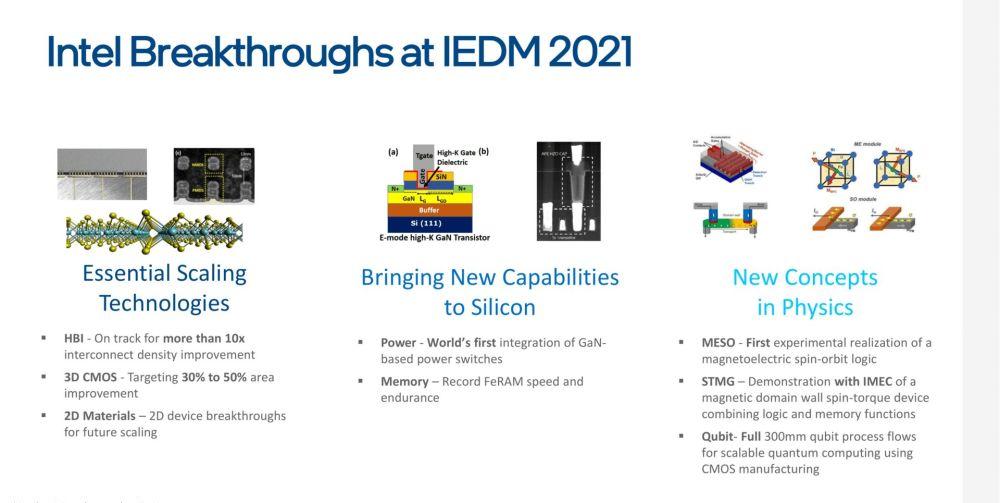Everyone says Moore's Law is dead, but Intel doesn't think so. At the recent IEEE International Conference on Electronic Devices (IEDM), Intel presented the innovation and research results they continue to drive Moore's Law. The content is mainly divided into three parts: basic scaling technology, the introduction of "core" capabilities, quantum computing and other cutting-edge research.

The basic scaling technique describes a way to continuously increase the number of transistors per unit of chip area after the process has reached a bottleneck. These include: increasing interconnect density by more than 10x through hybrid bonding packages, increasing transistor density by 30% to 50% through a new structure of RibbonFETs, and introducing single-layer molybdenum disulfide in chip manufacturing to reduce the interfacing layer spacing of silicon chips from 15nm to 5nm.
The Introduction of "Core" Capabilities section focuses on two of Intel's innovations: the use of Gallium Nitride technology to improve the efficiency of switching power supplies, and the introduction of FeRAM as an eDRAM. Digital gamers are familiar with the technological revolution brought about by gallium nitride charging heads, and this time Intel has implemented GaN-based power switches and silicon-based CMOS integration on 300mm wafers for the first time.
Some time ago, Intel's 13th generation Core sent out the news of the integration of DLVR digital linear regulator, although it is not yet possible to determine whether this part will use gallium nitride, but Intel's trend of re-implanting the voltage control module into the CPU has been largely determined. Gallium nitride technology can reduce power supply losses and improve power conversion efficiency.
It's also very interesting to use FeRAM as eDRAM. FeRAM ferroelectric memory itself is non-volatile storage like NAND flash memory, and FeRAM also has the characteristics of low latency, high durability and support for direct overwriting writes, which makes it a supplement to SRAM, providing greater cache capacity and the special ability to not lose data without power failure. How Intel will take advantage of these features of FeRAM remains to be seen.
The final third part describes Intel's research progress in quantum computing chips.
All of the above are relatively long-term content. Ahead of next month's CES International Consumer Electronics Show, Intel will also hold a press conference covering the theme of CES 2022 on December 15, when we should learn more about the new hardware that will be released in the near future.